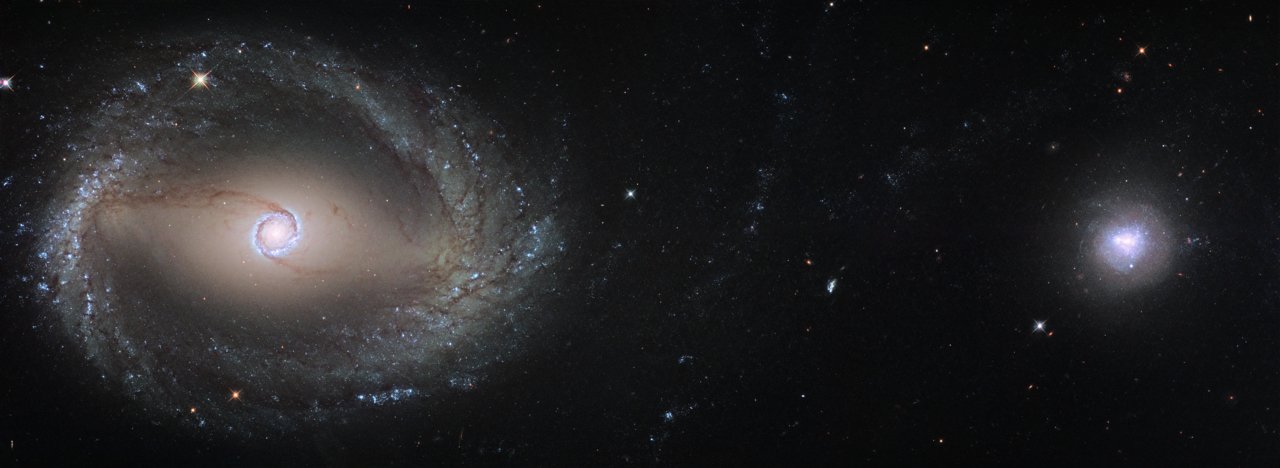Astronomers use the dance of galaxies to see how they merge
The galactic version of David and Goliath, reveal how these gigantic structures coalesce

Both NGC 1510 and NGC 1512 are 30 million light years away from Earth, and are in the process of moving. Image credit: ESA/Hubble, NASA
NASA/ESA’s Hubble Space Telescope has imaged two galaxies in our relatively local neighbourhood, and it shows fantastic broadness and variety to its beauty. Even though NGC 1510 (right) seems miniscule in comparison to NGC 1512 (left), there is still a gravitational tug-of-war between the two that causes their unusual shapes with intense, bright star forming regions.
NGC 1512 is classified as a barred spiral galaxy, which is appropriately named because of the bar that runs through its nucleus and of which normally contains the majority of the gas, dust and stars within the galaxy. NGC 1510 is classified as a dwarf, and although it pales in comparison to the size of its galactic partner, there is still a strong gravitational effect happening between the two that has been occurring for 400 million years.
NGC 1510 is currently in the process of merging with its larger companion, which has remoulded the shape of NGC 1512. In this scenario, the gas and dust is being funnelled through the bar, into the extremely bright and colourful ring at the centre of NGC 1512 – which is home to the most intense star-forming region within the galaxy, as it spans 2400 light years across.
This isn’t the first time this has happened to NGC 1512, as previous observations in 2015 have shown that the outer regions of the spiral arms were actually part of a separate, older galaxy. Similar to what is currently happening to NGC 1510, NGC 1512 has caught a smaller galaxy in its gravity and slowly devoured it.
This image represents the interactions that occur between galaxies of all shapes and sizes interacting can result in notable changes to their structures, constituents and star forming rates. This research plays a vital role in understanding the evolution of galaxies, and in turn, the appearance of the universe.
Keep up to date with the latest space news in All About Space – available every month for just £4.99. Alternatively you can subscribe here for a fraction of the price!




